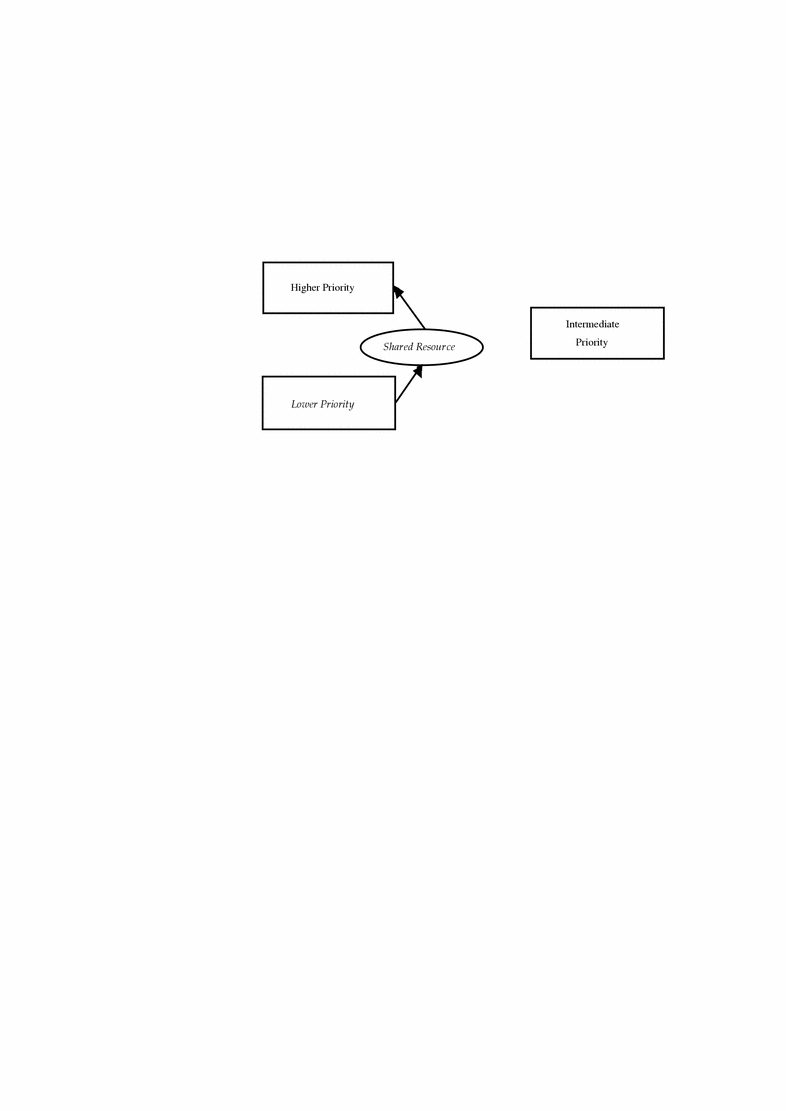Priority Inversion
A time-sharing process can block a realtime process by acquiring a resource that is required by a realtime process. Priority inversion is a condition that occurs when a higher priority process is blocked by a lower priority process. The term blocking describes a situation in which a process must wait for one or more processes to relinquish control of resources. If this blocking is prolonged, even for lower level resources, deadlines might be missed.
By way of illustration, consider the case in Figure 9-1 where a high priority process wanting to use a shared resource gets blocked when a lower priority process holds the resource, and the lower priority process is preempted by an intermediate priority process. This condition can persist for a long time, arbitrarily long, in fact, since the amount of time the high priority process must wait for the resource depends not only on the duration of the critical section being executed by the lower priority process, but on the duration until the intermediate process blocks. Any number of intermediate processes can be involved.
Figure 9-1 Unbounded Priority Inversion

- © 2010, Oracle Corporation and/or its affiliates
